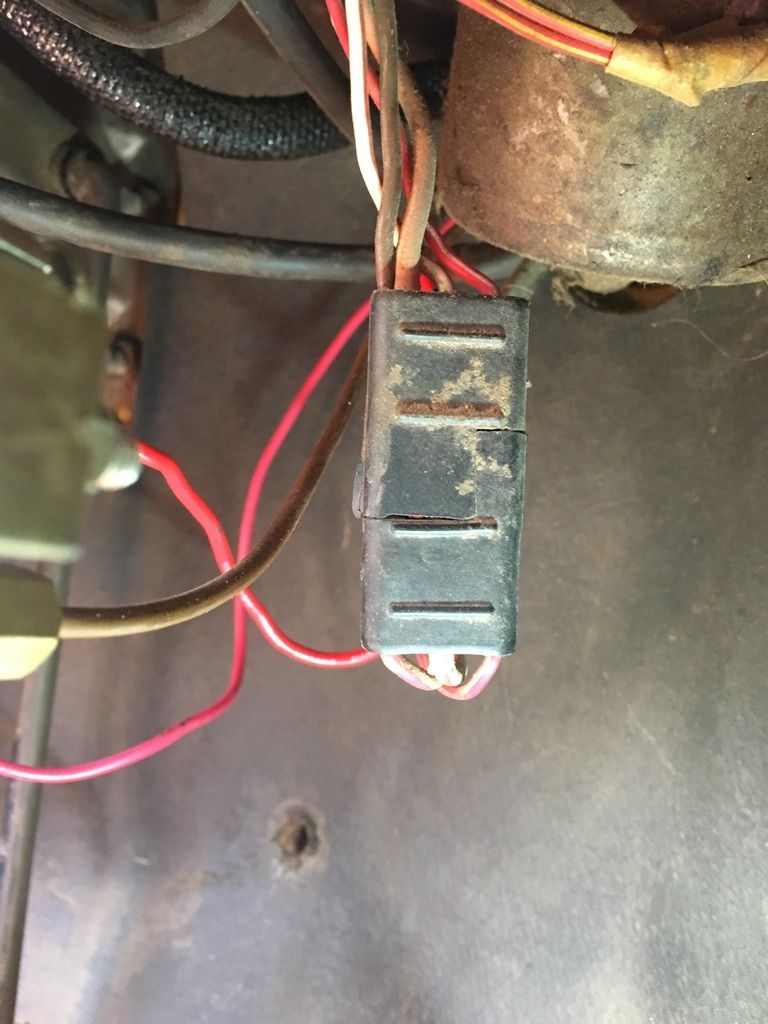So a short recap - I previously posted some videos of my 445 running pretty roughly and described some other issues including hard starting, poor power, and low vacuum. I also mentioned that I had a loud whistle coming from the carb.
Howie (ScotiaFE), who hasn't been around in a while, suggested my main problem was I was hanging valves. I re-did the lifter pre-load following Barry's advice - turned down the adjustment screw until it made contact with the pushrod, and then one more full turn. This made a difference and I saw vacuum come up to about 10 inches, it started easier and ran smoother, and seemed to have a lot more power.
In addition I took off the carb and adjusted the rear butterfly to close it a little more - this eliminated the whistle, and I adjusted the idle mixture a little. Without going any deeper I stopped there with the carb but I did check the timing and turned it up to about 16 degrees of advance and it ran most happily there.
At this point I took it in to have new collectors made and new headers installed to stop all the exhaust leaks, and when I dropped it off I had to move it and on the warm restart I had a kickback on the starter suggesting it was too far advanced. I got it back this morning with the new headers.
The exhaust shop is also a bit of a local hotrod garage and the owner and his mechanic are well respected in the hobby locally. His experience with FEs is not great, but he has worked on some. He told me that he was pretty sure I had a miss when it was cold (popping though the exhaust and running very rough) that went away as it warmed up. He said it sounded to him like I was still tight on the valves. I told him how the pre-load was set and he was surprised - his experience with the other team suggested 1/2 turn of pre-load after contact with the pushrod.
We discussed setting it up and he told me to check the exhaust temperatures on the pipes when I got home, and the temperature range I was looking for would be between 325 and 375, particularly on the rear pipes, possibly a little lower on the front ones. I drove it home (about 15 minutes) and noted that it was not running as well as the morning I took it in a week ago. In particular in 3rd (really 2nd since you start it in 2nd) it was balky and choppy at low RPM after the shift.
The results were surprising - my pipes at idle with a motor that had run for 20 minutes were (in degrees F):
- 1 - 270 / 5 -420
- 2 - 475 / 6 - 475
- 3 - 430 / 7 - 275
- 4 - 315 / 8 - 215
I checked it a couple of times and the numbers bounce around a bit but they were consistent enough. I also checked the timing to reduce the advance and to my surprise it was not at the 18 I set it at but was now up around 28 degrees. I went to take the vacuum advance hose off and it was already off - it is usually connected to the timed port on the side of the QFT. I backed the timing down to about 16 degrees advance, and checked the vacuum. It was at around 5 inches at 28 degrees and came up to about 8 at 16 degrees. A few weeks ago it had been up around 10 inches, since the last time I checked the vacuum I had reduced the richness of the idle mixture slightly, and closed the rear butterfly a smidgen.
I hope to get an O2 sensor on it this weekend and get some other info, but I am confused about the exhaust temperatures and the fact that the timing seems to be shifting. It has a new balancer and I doubt it is moving, but I may have to check it. The bolt was tightened enough that I couldn't move the distributor without backing it off. I also note that this is not the first time I've been surprised that the timing didn't seem to be where I left it.


